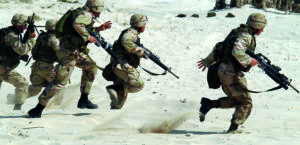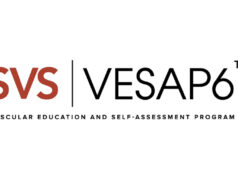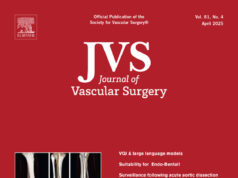 An exemplar of how surgery can best perform its role amid a catastrophic event like the COVID-19 pandemic can be found in military medicine’s response to the events that occurred on 9/11, according to an editorial written by Todd E. Rasmussen, MD, and Erin E. Koelling, MD, published in the Journal of Vascular Surgery.
An exemplar of how surgery can best perform its role amid a catastrophic event like the COVID-19 pandemic can be found in military medicine’s response to the events that occurred on 9/11, according to an editorial written by Todd E. Rasmussen, MD, and Erin E. Koelling, MD, published in the Journal of Vascular Surgery.
The vascular surgeon tandem, both serving members of the military, outlined the internationally collaborative nature of how the U.S. armed forces went about its care for thousands of injured service members around the world.
“While different in scale, military medicine’s response to 9.11.2001 provides insight as to how the surgical profession can optimize its response to the 2020 pandemic,” wrote Rasmussen and Koelling, respectively professor of surgery and associate dean for research at the Uniformed Services University and attending vascular surgeon at Walter Reed National Military Medical Center in Bethesda, Maryland, and assistant professor of surgery and the chief of vascular Surgery at the same institutions. “To rapidly attain a capability to care for thousands of injured service members around the world and to make patient care decisions in austere, resource-limited situations, the U.S. military relied on international partnerships, expanded its patient care capacity, and implemented data-driven, performance improvement, including practice guidelines.”
The authors referenced a recent commentary written by Seattle-based Benjamin W. Starnes, MD, and Niten Singh, MD, for Vascular Specialist, which detailed how North America’s COVID-19 ground zero was handling the outbreak. Starnes, Singh and a group of colleagues that also included Jake Hemingway, MD—all vascular surgeons in the division of vascular surgery at the University of Washington in Seattle—devised an early set of COVID-19 vascular guidelines that many institutions either adapted or more or less followed.
The authors outlined the work of Jun Jie Ng, FRCS, et al, of the National University of Singapore, who broke down the approach their vascular service had taken in the Southeast Asian city-state in a letter to the editor published in the Journal of Vascular Surgery. “In order to optimize our effectiveness in this pandemic, we must put to use strong international partnerships in vascular surgery,” state Rasmussen and Koelling.
Additionally, they noted the guideline-driven approach for vascular care during the pandemic coordinated between the American College of Surgeons (ACS) and the Society for Vascular Surgery (SVS).
“These guidelines are intended to support surgeons in developing an organized, deliberate response to what could be a rapidly changing practice setting. Similar to the military’s casualty care guidelines, these documents do not usurp independent decision-making, and will be applied in different ways by surgeons in different cities and regions of the U.S. and worldwide,” Rasmussen and Koelling continued.
The authors also detailed such elements as triage in resource-limited environments. “Most mass casualty events occur without notice, providing little time for the healthcare system to respond,” they wrote. “As such, the most important factor in optimizing team performance and patient survival is to do system-wide planning ahead of time. In our experience, no mass casualty triage scenario ever goes perfectly and they are always chaotic. However, implementing lessons from those who have been through similar events goes a long way to improving success, if or when healthcare providers are faced with such a daunting task. Unlike most mass casualty events, this pandemic has provided a short-lead time for many providers and healthcare systems not yet affected to prepare.”
Concluding, Rasmussen and Koelling noted: “One of Dr. Norman Rich’s favorite phrases regarding military students, trainees and faculty at the Uniformed Services University and Walter Reed is ‘we teach contingency, we must practice contingency.’ As vascular surgeons we have a knack for responding to conditions that evolve quickly and have life-threatening consequences. In the case of the 2020 pandemic, we should use the tools we’ve developed to adapt and lead in the whole-of-medicine response to the virus.”
SOURCE: doi.org/10.1016/j.jvs.2020.03.036











